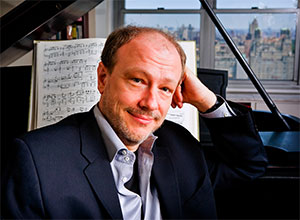by Daniel Hathaway

(The Friday matinee crowd heard Rameau’s Suite from Dardanus and Gluck’s Suite from Don Juan plus the symphony, while Saturday evening’s patrons got all four works.)
Friday evening’s performance was made special by a little curtain-raiser in which orchestra members Frank Rosenwein and Paul Kushious conducted an impromptu interview with McGegan on the subject of what the concert experiences of Mozart’s audiences might have been like.
The perpetually charming McGegan painted a scenario of lengthy musical affairs in which the movements of a symphony might have been spaced out with other works, some vocal selections always being de rigeur. He talked a bit about the “Jeunehomme” concerto — its nickname the result of linguistic erosion, the piece having been written for the female pianist Victoire Jenamy — and he quipped that, considering the hand crossings Mozart wrote for her, he hoped that her corset hadn’t been too tight.
At the end of the conversation, Rosenwein and Kushious moved to their places in the Orchestra, amusingly handing their microphones to McGegan, who passed them on to a member of the stage crew before returning with Hamelin.
Mozart had just turned 21 in 1777 when he wrote the Ninth Piano Concerto, making a quantum leap forward toward his full maturity as a composer. The formal layout of the work and its musical content are full of innovation and experimentation, beginning with the sudden and unanticipated entrance of the soloist right after the orchestra begins. Falling somewhere on the spectrum between the symphonic and the operatic, the piece contains delightful elements of both.

In 1783, Mozart stopped over in Linz enroute to Vienna, where he composed the “Linz” symphony in a hurry for an “academy” there on November 4. Though not so often programmed as his three last symphonies — The Cleveland Orchestra first performed it in 1943 — the work has distinct charms, especially in its unusual wind writing.
The Cleveland Orchestra was putty in the bare hands of the beaming McGegan, who inspired a full-textured, lyrical performance of the “Linz,” complete with its touches of humor — he illustrated a wispy final gesture in the music with fingers in the air as though tossing fluff into the wind.
Published on ClevelandClassical.com November 21, 2017.
Click here for a printable copy of this article



